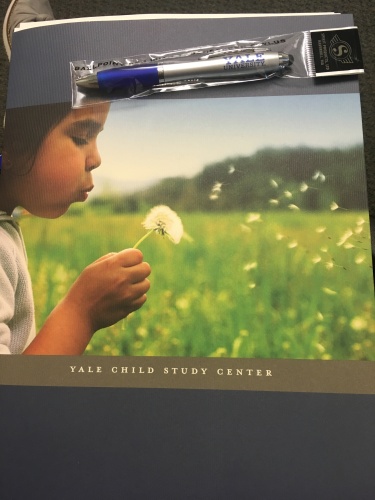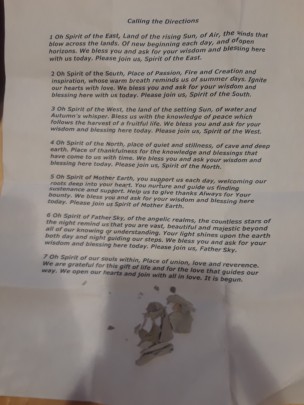My last week in New Haven at the Yale Child Study Centre was extremely rich. I spent time with the Intensive Family Partnership Team and was welcomed into their team meeting. It was like the team meeting I would attend within Circle in that there was lots of food! The team work with vulnerable families who have Child Protective Services involvement to prevent children being removed from the family home. This team does not work with families affected by substance use specifically however the team do have a large majority of cases where substance use is an issue. I learn that New Haven has a problem with a drug called PCP or Angel Dust. This substance is a strong tranquiliser and can have varying effects on the user from hallucinations to disassociation. Heroin is also an issue and many people continue to describe the Opiate Epidemic that is sweeping the whole country. Many people who use opiates have started with opiate based pain killers which then leads to heroin and this cuts across all classes. Cannabis and alcohol are also issues in the State. Connecticut is a small state however it is rich in high quality services, many of which are based in the Yale Child Study Center.
I spend a day outside of the centre in the ‘Moms ‘n’ Kids’ research program lead by Nancy Suchman. Nancy has worked for a long time exploring the effects of maternal reflective functioning. Women who attend the program see a counsellor weekly for twelve weeks and address the stresses in their life. The program aims to nurture the capacity of the Mothers involved to make sense of and manage emotional distress in parenting and to make sense of their child’s emotional needs to promote a secure attachment. The ‘Moms ‘n’ Kids’ program has seen an improvement in almost all Mothers capacity to understand and manage their own distress to provide more consistent parenting at the end of the twelve weeks.
I also meet with Justin Rogola who is a consultant with the Department of Children and Families (DCF) in the field of substance use and mental health. Social Workers can meet with Justin and discuss a case they are not sure how to progress with. Justin will examine the details of the case and make recommendations on what the next steps should be. This can sometimes lead to recommendations for residential treatment for parents. Karen Hanson is also attending this meeting and we have an interesting discussion about what makes a good quality, successful residential program. Justin explains the difference between a sober house and a good quality residential program and highlights the point residential programs will not work for everyone. Residential programs for pregnant and parenting women are expensive and are often reserved for Mothers who have tried many other interventions and this is a last chance for achieving sobriety. Thorough intake assessments are necessary to ensure the women accessing this type of treatment have a genuine motivation to change and are willing to work hard to achieve a sober lifestyle.
I met with Kim Ruzbarsky who is a DCF investigative social worker and Jeanette Radawich from the Family Based Recovery team. Kim investigates cases that have been phoned in to a central point where a potential risk has been identified to a child. It is clear Jeanette and Kim have a very good working relationship both understand and value the work of each other. Kim gives me a great understanding of how the child protection system works in Connecticut and how assessments are made when a child may need to be removed. Jeanette and Kim are very passionate and committed to their jobs and to the families they work with which makes for fascinating discussions. We all agreed if we were to rule the world we would have the place in ship shape in no time!!
During my time in New Haven I decided to do a walking tour of the Yale Campus. The campus is beautiful with lots of old buildings, cobbled streets and big oak trees. I learned that one library on campus has been built to replicate a church. It looks from a distance like a church however the writing and the statues that have been carved into the building represent educational and historical figures and languages. When entering the library it resembles a church hall however the stain glass windows depict significant moments in history rather than scenes from the bible.
The Beinecke Rare Book & Manuscript Library is on Yale Campus too which is a beautiful building made of marble. The marble allows only a certain amount of sunlight through into the building in order to preserve the rare books which includes a rare copy of the Gutenburg bible, the first major book printed in the 1450s.
Over the weekend I took a trip to Boston and followed the Freedom Trail. I loved Boston and the architecture is similar to the buildings in Yale however it is on a much larger scale! The Freedom Trail follows the significant monuments, buildings and sites of the American Revolution which began in Boston. The trail took me through Quincy Market where I watched ‘Kilted Colin’ who was an American, bag-pipe playing, uni-cycling street performer! I got on the ferry back to the main center and enjoyed a meal before heading back to New Haven on the night train.
I have one more day in New Haven before I head to New York for a few days. Then my adventure will be over and I will be back in Scotland!


![IMG_4245[1] IMG_4245[1]](https://lyndsayfr.files.wordpress.com/2017/08/img_42451.jpg?w=345&resize=345%2C259&h=259#038;h=259)


![IMG_4229[1] IMG_4229[1]](https://lyndsayfr.files.wordpress.com/2017/08/img_42291.jpg?w=194&resize=194%2C259&h=259#038;h=259)
![IMG_4230[1] IMG_4230[1]](https://lyndsayfr.files.wordpress.com/2017/08/img_42301.jpg?w=194&resize=194%2C259&h=259#038;h=259)




![IMG_4256[1] IMG_4256[1]](https://lyndsayfr.files.wordpress.com/2017/08/img_42561.jpg?w=262&resize=262%2C196&h=196#038;h=196)
























 Smudging involves burning sacred herbs and washing your hands, eyes, ears, heart and brain in the smoke in order to cleanse negative energy. We started the session by walking up to the roof of the hospital and each calling the corners of the earth which you can see in the picture. The Chaplin used a giant feather she had been gifted to direct the smoke over our heads, bodies and the base of our feet. Once this was done to everyone in the group the Chaplin then blessed the unborn babies. This ritual led me to think about the importance of mindfulness and taking time in a chaotic world or mind to gather our thoughts. I certainly felt more relaxed about the day ahead when we made our way back to the ward. During the walk down to the ward I was able to enjoy chatting with the women who were in good spirits and talked about their own pregnancy experiences with me. The women were intrigued by my accent and I am learning that speaking with a Scottish accent has served me well on this trip! Most people I have met so far have been very complimentary about my accent and whilst some mistake me for Irish everyone has been curious about where I am from.
Smudging involves burning sacred herbs and washing your hands, eyes, ears, heart and brain in the smoke in order to cleanse negative energy. We started the session by walking up to the roof of the hospital and each calling the corners of the earth which you can see in the picture. The Chaplin used a giant feather she had been gifted to direct the smoke over our heads, bodies and the base of our feet. Once this was done to everyone in the group the Chaplin then blessed the unborn babies. This ritual led me to think about the importance of mindfulness and taking time in a chaotic world or mind to gather our thoughts. I certainly felt more relaxed about the day ahead when we made our way back to the ward. During the walk down to the ward I was able to enjoy chatting with the women who were in good spirits and talked about their own pregnancy experiences with me. The women were intrigued by my accent and I am learning that speaking with a Scottish accent has served me well on this trip! Most people I have met so far have been very complimentary about my accent and whilst some mistake me for Irish everyone has been curious about where I am from.